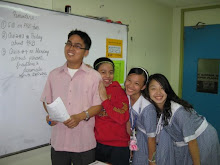
Early life and career
Ferdinand Emmanuel Edralin Marcos was born September 11, 1917, in Sarrat, Ilocos Norte outside Laoag City to parents Mariano Marcos and Josefa Edralin. He was named after Ferdinand VII of Spain and baptized into the Philippine Independent Church. According to the Marcos family's oral history, the family name was originally Taguktok, and their Ilokano roots have some Japanese and Chinese ancestry. Ferdinand was a champion debater at the University of the Philippines, where he also participated in boxing, swimming and wrestling.
In December 1938, Mariano Marcos, his brother Pio, his son Ferdinand, and his brother-in-law Quirino Lizardo were prosecuted for the murder of Julio Nalundasan. On September 20, 1935, the day after Nalundasan for the second time defeated Mariano Marcos for the National Assembly seat for Ilocos Norte, Nalundasan had been shot and killed in his house in Batac. According to two witnesses, the four had conspired to assassinate Nalundasan, with Ferdinand Marcos eventually doing the killing. Late January 1939 they were denied bail, and in the fall of 1939 they were convicted, Ferdinand and Lizardo receiving the death penalty for premeditated murder, while Mariano and Pio were found guilty only of contempt of court. The Marcos family took their appeal to the Supreme Court of the Philippines, which on October 22, 1940, overturned the lower court's decision and acquitted them of all charges but contempt.
In 1939, while incarcerated, Ferdinand Marcos graduated cum laude with a law degree from the U.P. College of Law and was elected to the Pi Gamma Mu international honor society. While in detention Governor Roque B. Ablan Sr. of Ilocos Norte helped Marcos study for the bar exams by providing a desk lamp in his cell, law books and reviewers. Marcos passed the bar examination with an almost perfect score of 98.01%, while also writing an 830-page defense. Several people contested his score and a retake was taken albeit an oral bar examination witnessed by several people. His second bar examination resulted in a perfect score.
First term (1965-1969)
Initial Infrastructure Programs
To rally the people, he vowed to fulfill the nation’s “mandate for greatness:”
This nation can be great again. This I have said over and over. It is my articles of faith, and Divine Providence has willed that you and I can now translate this faith into deeds.
In his first State of the Nation Address (SONA), President Marcos revealed his plans for economic development and good government. President Marcos wanted the immediate construction of roads, bridges and public works, which included 16,000 kilometers of feeder roads, some 30,000 lineal meters of permanent bridges, a generator with an electric power capacity of one million kilowatts (1,000,000 kW), and water services to eight regions and 38 localities.
He also urged the revitalization of the judiciary, the national defense posture and the fight against smuggling, criminality, and graft and corruption in the government.
Second term (1969-1972)
In 1969, President Marcos was reelected for an unprecedented second term because of his impressive performance. It is generally known that Marcos had the most infrastructure and constitutional accomplishments, which were equivalent to those of all former presidents of the Philippines. During his second term he developed a personality cult in the Philippines surrounding him, requiring businesses and schools all across the Philippines to have his official presidential picture or their facilities shut down. In addition, Marcos's propaganda messages were placed all across the Philippines, many of them taking the place of billboard advertisements. The personality cult lasted until his deposition in 1986.
The second term proved to be a daunting challenge to the president: an economic crisis brought by external and internal forces, a restive and radicalized studentry demanding reforms in the educational system, a rising tide of criminality, subversion by the re-organized Communist movement, and secession in the south.



No comments:
Post a Comment